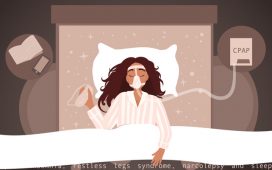Psychosocial threats physicians face are linked to the very nature of their work, the social and cultural trends shaping their environment, the uncertainty regarding policies and the technological shifts.
1. The expectations of long hours
Doctors have many responsibilities and often have to work on many cases and with many patients. They are seriously at risk of overworking and the fact that their job is inherently stressful adds to the sheer volume. Shifts are long and consist of lots of stressful, demanding tasks that require constant attention to details and responsiveness. The fact that they also must be virtually always available to be called for an emergency adds the feeling on being always on duty to the mix, with the consequence of having little to zero control over their personal life.
2. The small margin of error and high level of consequence
The nature of their work is stressful as it doesn’t tolerate even the smallest of errors. The consequences of small errors can be tremendous when it comes to health hazards, causing stress and anxiety. Mistakes can be haunting, and physicians live constantly with the fear of committing a fatal faux-pas. Perfectionism is not only an ideal doctors must aim for, it is often something they must uphold when making every decision.
3. The risk of physician burnout
These stress factors have the obvious consequence of causing physicians to experience burnout. Burnout is the physical and emotional exhaustion that is a consequence of being highly exposed to stress factors and be constantly pressed to deliver quickly, with little to no tolerance for approximation and mistakes. Human service workers are usually the most susceptible to experiment burnout, because of the huge responsibilities they face every day.
4. Discrimination in the workplace
Reports have pointed out that there is a relationship between burnout, gender and negative marital status. Discrimination in the workplace can put even more pressure on the individuals who already experience stress factors related to who they are, especially since these stress factors can encourage discriminatory practices. Female doctors are particularly exposed to burnout.
5. The trouble of effectively using Electronic Health Records
Optimization of the monitoring tools doctors can use has a role to play in modern healthcare delivery. Electronic health records (EHRs) can indeed improve care delivery, but often times doctors struggle to effectively implement these tools and can often be confused by the perspective of allocating time to shift from more traditional ways to the new ones instead of doing their job. It adds a stress factor to the mix, as doctors need to efficiently use the tools to improve service, but without losing sight of their mission.
6. The abundance of physician time spent on uncompensated tasks
Doctors often find themselves spending time on tasks for which they won’t be compensated. It is estimated that 20% of the workday can be spent managing tasks that are not compensated, like drafting authorizations, managing new technology like EHRs and non-clinical paperwork. It would mean that doctors lose $50,000 per year according to Joseph Valenti, MD, a board member of the Physicians Foundation, a nonprofit group that advocates for practicing physicians.
7. Third-party payer interference in patient care
Insurances always monitor the situation of patients to preserve their own interests and make sure their business is not threatened. However, their interference comes at a price for stakeholders, mainly doctors and patients. While patients may see restrictions suddenly apply and put them in stressful financial situations, doctors spend too much time communicating with insurances and tailoring their care delivery to the contract and the insurance’s recommendations.
8. The costs of medical care as barriers to patient adherence
Doctors have always struggled to make patients stick to their recommendations and medication regimen. But with the increasing costs of prescription drugs, doctors are more and more facing an uphill battle, as patients often can’t afford to follow the medication regimen scrupulously. Doctors need assistance from organizations and programs that can help patients afford their medication without putting their health in danger.
9. The growing patient disrespect toward physicians
The internet has changed how patients and doctors interact. Before the Internet, patients would listen religiously to their doctors and follow their recommendations without question. However, Internet has given new means to get information and alternative versions, which challenges a doctor’s authority. This shift has affected the relationship, especially since doctors have less and less time to allocate patients and can’t get to know them as much as they need to.
10. The ever-changing healthcare insurance marketplace
2017 has been an uncertain year for the healthcare industry, and it is certainly going to continue under the current administration. Some congressmen have publicly expressed their ambition to “repeal and replace” the Affordable Care Act, failing each time. Other political leaders are also attacking Medicare and Medicaid, which involve the per capita limits and the block grants the federal state allocates individual states. This uncertainty places a strain on doctors and patients, generating further stress.
11. The stigma of physicians with mental disorders
Mental illness also affects healthcare professionals. While mental illness is often seen as a problem in the professional context, it is even worse in the healthcare sector, as doctors with mental illness may be viewed as dangerous, less competent, unpredictable and unstable. The culture in this industry has often discouraged professionals to seek out help and try solving issues, putting additional stress on individuals.
CONCLUSION
Overall, the psychosocial threats doctors face are a consequence of the very nature of their work, the social trends shaping the patients-doctors relationship, the global political environment in the US and the culture they operate in. Doctors suffer from overworking while as much as 20% is not compensated, uncertainty around healthcare policies under a Republican administration, the technological shift to which they must adapt, discrimination in the workplace, the interference of insurances and the perception of mental illness.
Resources:
Burnout and Doctors: Prevalence, Prevention and Intervention
Top 10 challenges facing physicians in 2018
Why Doctors Are Stressed and What They Can Do
Healthcare industry takes on high physician suicide rates, mental health stigma
Mental illness-related stigma in healthcare
Source: AskWonder







